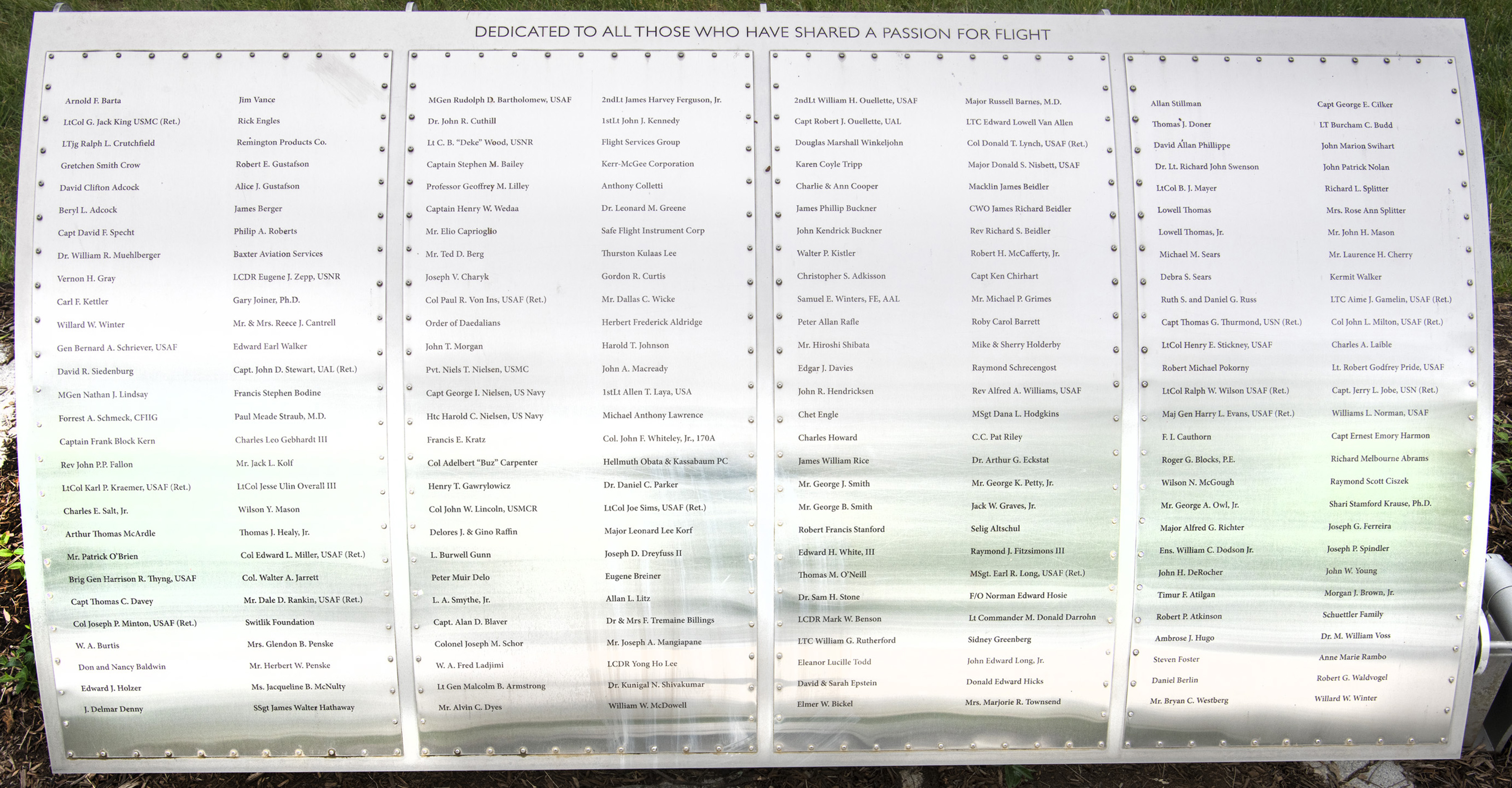Robert P. Atkinson

Foil: 26 Panel: 4 Column: 1 Line: 24
Wall of Honor Level: Air and Space Sponsor
Honored by:
My first solo was April 30, 1938 in an Avro Avian biplane at Indianapolis, Ind. I have been a Silver Wings member since 1991, and involved with aviation related activities since 1927. My first airplane ride was in an OX-5 Waco in 1927 as a prize for winning a model airplane contest. In 1930 I won the Indianapolis city champion city championship for both the indoor and outdoor model airplane endurance contests with rubber band powered models.
In 1935 I graduated with distinction from Purdue University with a degree in Aeronautical Engineering and returned to the Allison Division of General Motors, where I had worked before graduating, to do design and test work.
1938 was a crucial year for the Army Air Corps (as the Army Air Forces was then called). They planned a competition to select a company to design and demonstrate the best fighter aircraft. The P-37 was a recently acquired fighter (1935) built by Curtis Airplane Co. and powered by the Allison V-1710 engine with turbocharger. This engine had many problems. Curtis and Allison proposed a modified P-37 as a candidate for the new fighter, eliminating the turbocharger and increasing the speed of the built-in engine supercharger. This new fighter later was designated the XP-40. This was inadequate to achieve the expected top speed and many unsuccessful attempts were made to improve it. Even though it wasn't my duty I worked all night to try an idea for a diffuser design and when it was tested, it had a greatly increased adiabatic efficiency (by which heat is more effectively transferred).
We built an engine with this supercharger and shipped it to Curtis for flight test. The speed increased 25 mph at 15,000 ft. This P-40 won the competition for best fighter and a very large contract. In 1943 Gen. H. H. Arnold, commanding general of the Army Air Forces (AAF), stated that the P-40s shot down more enemy aircraft than any other airplane.
Also in early 1943 the AAF asked Allison to take-over a jet engine contract that another company could not fulfill. To my surprise, I was put in charge of this program as project engineer. The compressor in this engine was the same type as the supercharger in the V-1710. An additional 300 pounds of thrust was required for the jet engine. In five weeks we increased the thrust by 500 lbs. with improved inlet vanes on the impeller. Two years later Allison added 2000 lbs. additional thrust. I received two patents that were the basis of this increase. Major improvements were also required in overhaul life. We not only achieved the 100 hour requirement, but later had it up to 1000 hours. I made it a practice that every operating defect would be remedied.
In 1979 and 80 I built a self-launching sailplane, correcting a design error in the lateral control system. This ship is now on display in the Experimental Aircraft Association (EAA) museum at Lakeland Fla. In 1980 I was awarded a "paid-up lifetime membership in the Central Indiana Soaring Society" as a reward for the engineering changes I made to the club tow plane to achieve a major improvement in reliability and operating cost.
From 1960 to Sept. 1990 I logged 1,008 flights in sailplanes and accumulated a flight time of 458 hours.
Wall of Honor profiles are provided by the honoree or the donor who added their name to the Wall of Honor. The Museum cannot validate all facts contained in the profiles.
Foil: 26
All foil images coming soon.View other foils on our Wall of Honor Flickr Gallery
